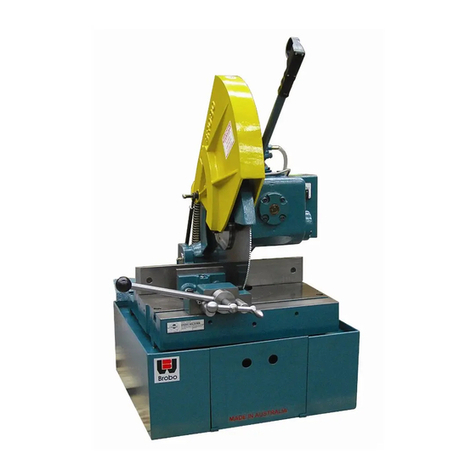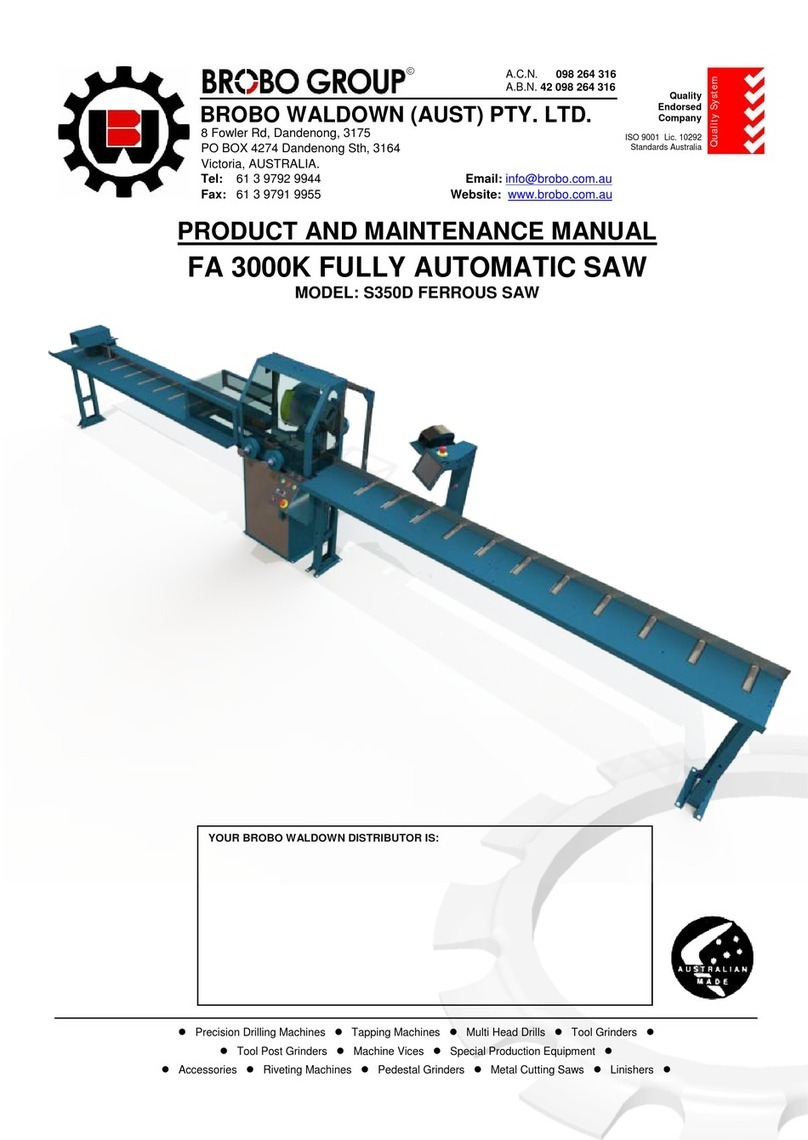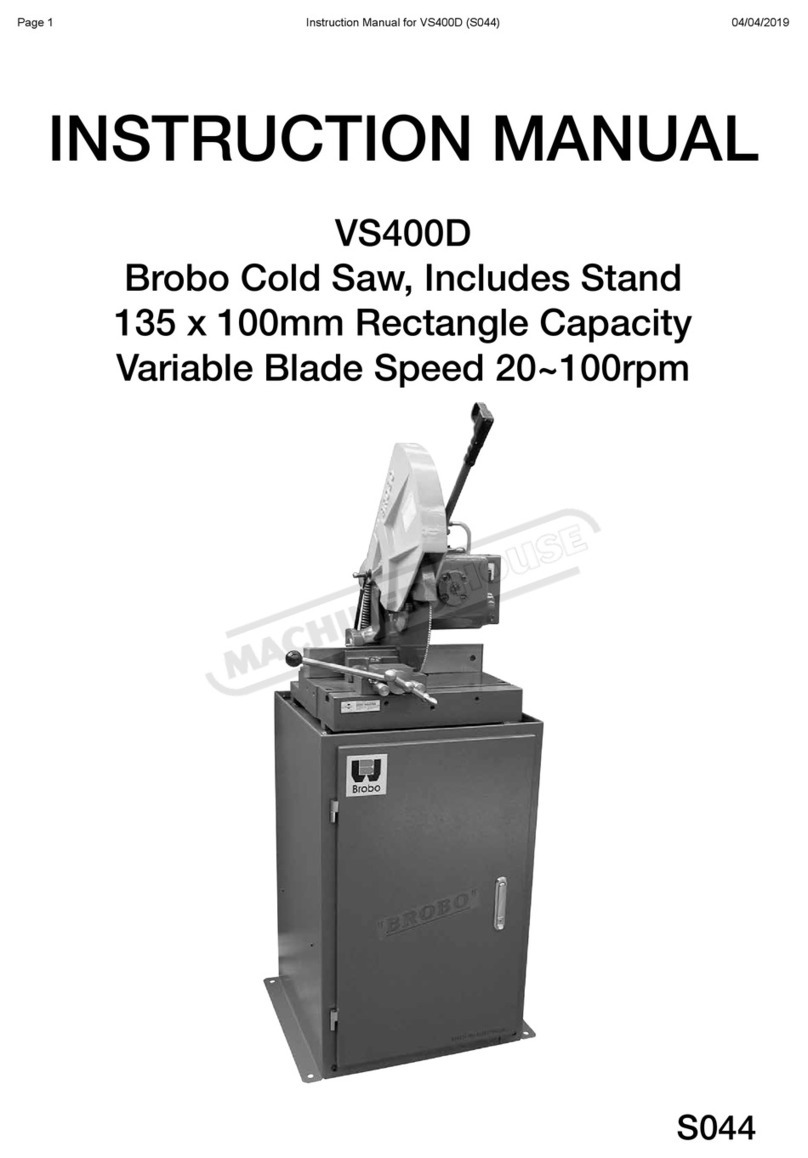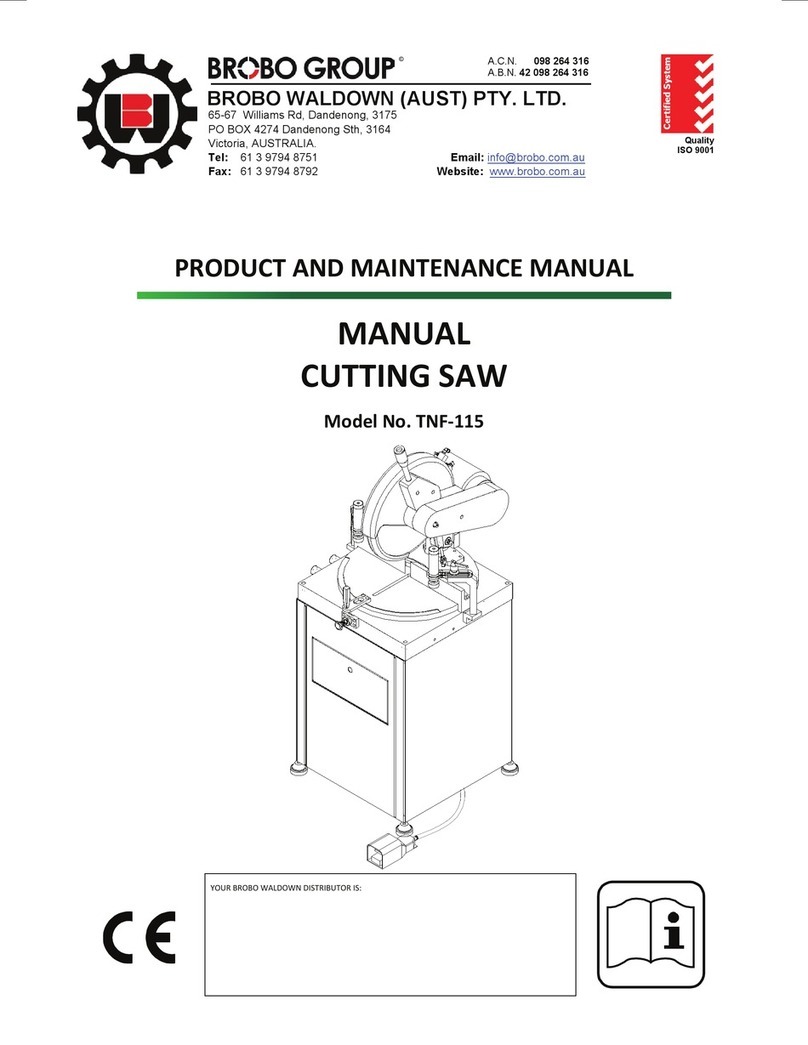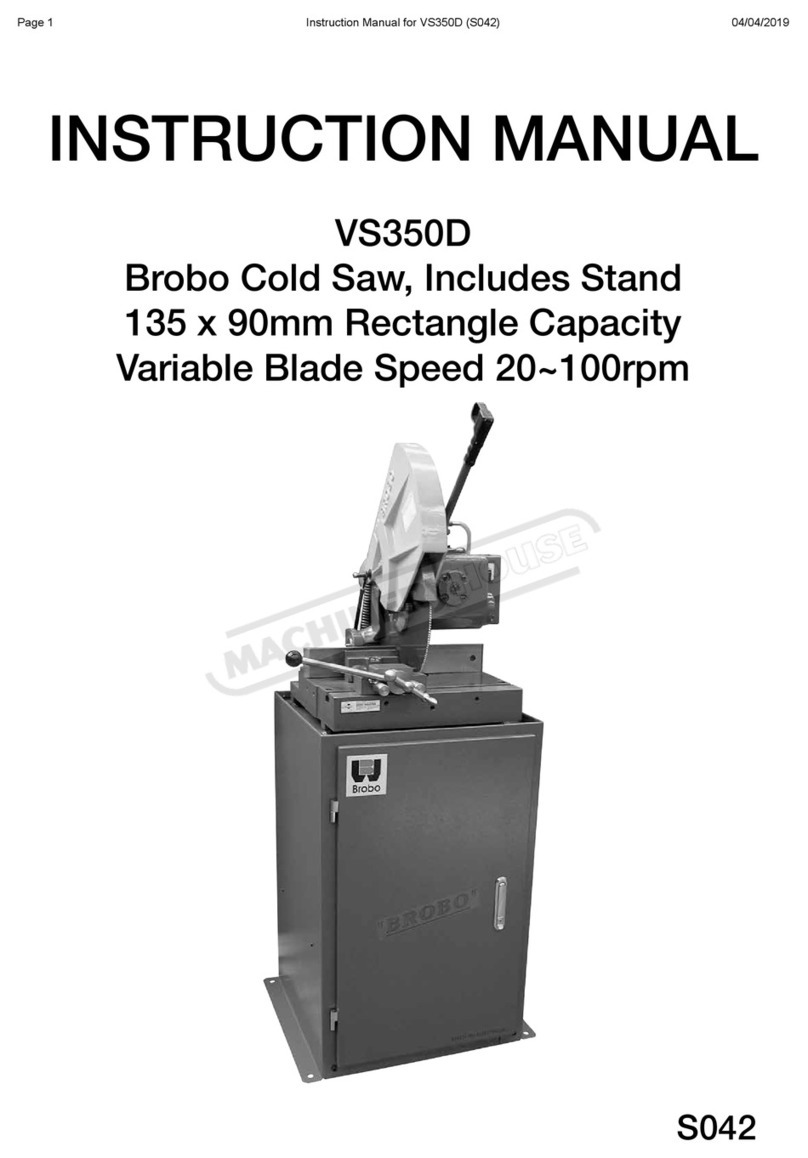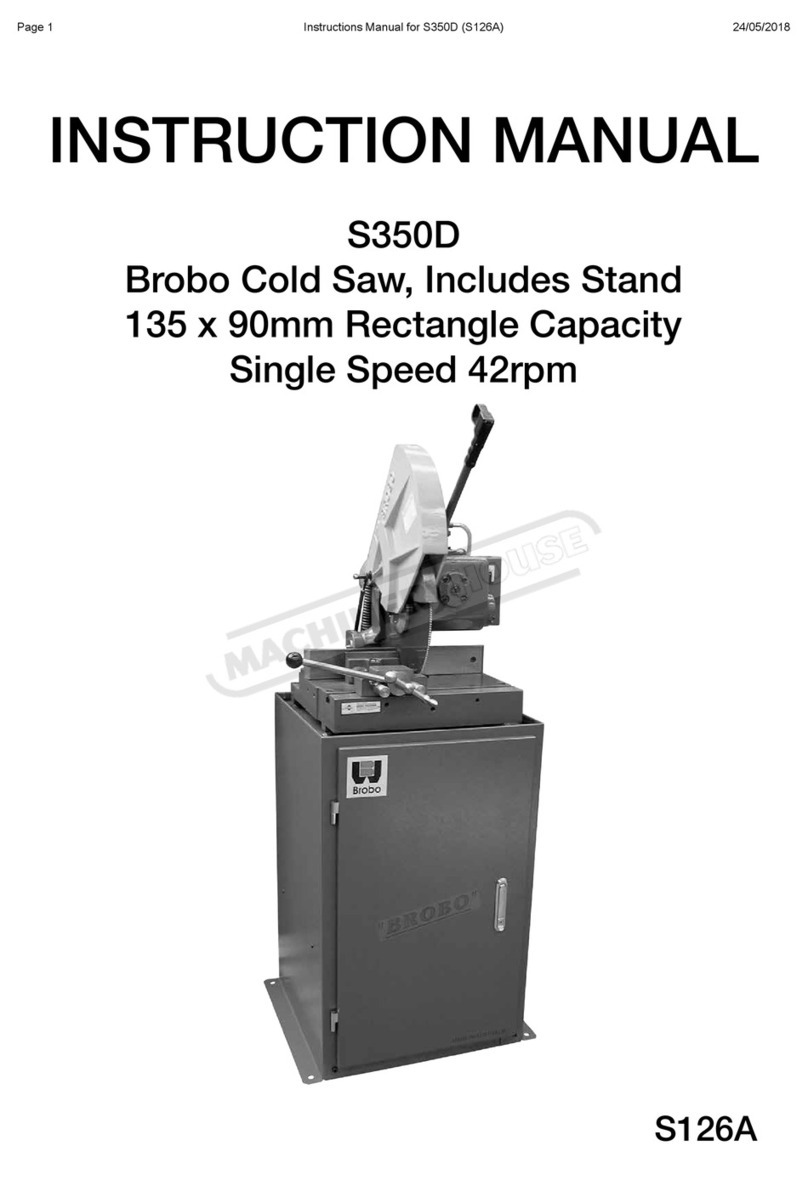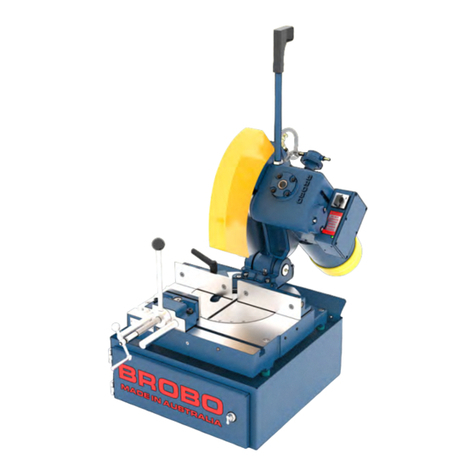
Brobo Group
brobo.com.au
CHAPTER 2 - Safety & Accident Prevention
The Brobo Group TNF115 Series 2 has been designed & manufactured in accordance with Australian Standards.
It is HIGHLY RECOMMENDED that the instructions & warnings contained in this chapter be carefully followed for
correct usage of the machine.
2.1. Operation of the Machine
The Brobo Group TNF115 Series 2 is specifically designed to cut non-ferrous metal cross sections with solid or
thin-walled profiles. Other types of material & machining are not compatible for use with the specifications of the
saw. This machine involves a high-speed blade rotation; therefore extreme caution is required when
operating the device.
The employer is responsible for instructing the personnel who, in turn, are obliged to inform the operator of any
accident risks, safety devices, noise emission & accident prevention regulations provided for by national &
international laws governing the use of the machine. The operator must be fully aware of the position &
functions of all the machine’s controls.
All those concerned must strictly adhere to ALL instructions, warnings, & accident prevention standards in
this manual.
The following definitions are those provided for by the EEC DIRECTIVE ON MACHINERY No. 98/37/CE:
Danger Zone - any zone in and/or around a machine in which the presence of a person constitutes a
risk for the safety & health of that person.
Person Exposed - any person finding him or herself, either completely or partly in a danger zone.
Operator - the person or persons are given the responsibility of installing, operating, adjusting,
maintaining, cleaning, repairing, & transporting the machine.
WARNING – UNAUTHORISED MODIFICATIONS/REPLACEMENTS/USE
The manufacturer declines any responsibility whatsoever, either civil of criminal, in the case of
unauthorised interference or replacement of one or more parts or assemblies on the machine,
or if accessories, tools & consumable materials used are different from those recommended by
the manufacturer, or if the machine is inserted in a plant system & its proper function is altered.
